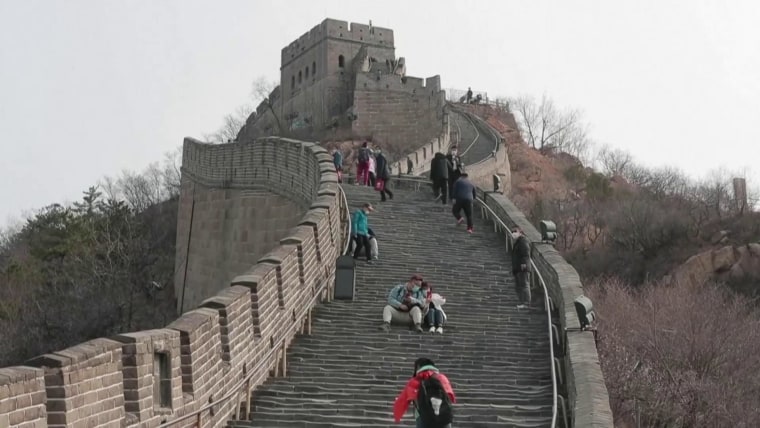Lockdowns are being championed as a way to help contain the coronavirus, but experts warn this will not be easily achieved in developing countries where crowded cities and slums could see the virus spread “like fire.”
Questions over how the world’s poorest will survive the coronavirus pandemic surged Wednesday, a day after India’s Prime Minister Narendra Modi announced a 21-day lockdown of its population of 1.3 billion people. Around 50 million Indians are thought to be living in extreme poverty.
“It’s a disease that makes disparity seem more obvious than any other,” Dr. Angela Chaudhuri, director of the nonprofit Swasti Health Catalyst, which works in slums and rural poor communities across India, told NBC News in a telephone interview.
“We’re saying wash your hands with soap and water or sanitizers and keep at a distance — none of these are available in the slums.”
A lockdown is essential to keeping the virus contained in richer communities and away from the poor because “if there is just one case, it’s going to be a flash fire,” Chaudhuri said, but the economic and social repercussions for the poor will be severe in a nation of stark wealth disparities.
It is estimated that with the clampdown in India, around a third of the world’s population is living under some form of lockdown.
Let our news meet your inbox. The news and stories that matters, delivered weekday mornings.
But across the world, for millions living in shantytowns with access to only the most basic sanitation, there is no way to self-isolate.
“The need of the hour as countries like India, the Philippines and now parts of Africa enter a lockdown phase is to consider these kinds of scenarios and maybe build temporary quarantine facilities for those living in shantytowns,” said Dr. Priya Balasubramaniam, a senior public health scientist for the Public Health Foundation of India.
While isolation is integral to preventing COVID-19, the disease caused by the coronavirus, from spreading among cities and states, Balasubramaniam said, it’s also buying the nation time to come up with a plan of how its health care system can deal with the pandemic.
South Africa, another nation with a vast wealth disparity, is putting its 57 million citizens into lockdown starting Thursday evening as cases there grew to 709 — the highest of any nation on that continent.
South Africa’s President Cyril Ramaphosa deployed police and the military to enforce the measure.
Dr. Sue Goldstein, a public health specialist at the South African Medical Research Council at the University of Witwatersrand, believes the situation is particularly urgent in economically deprived communities grappling with other health crises.
“We have to try and stop it because once it gets into those communities, they’ve got very high HIV rates… high (tuberculosis) rates and people are vulnerable,” she said.
However, she added, “We’ve got a youngish population, so that is our one saving grace at the moment.”
The West African nation of Senegal — which was among the countries hit by the 2014 Ebola virus outbreak — also declared a state of emergency earlier this week and imposed a curfew after more than 80 cases of the coronavirus were confirmed.
“The rapid evolution of COVID-19 in Africa is deeply worrisome,” Dr. Matshidiso Moeti, the World Health Organization’s regional director for Africa, said.
“We can still change the course of this pandemic,” she added, but said that “governments must draw on all their resources and capabilities and strengthen their response.”
There is a silver lining to the emergency, Balasubramaniam added. How these countries ultimately cope with the pandemic could be a lesson to the rest of the world. Already, many low-income countries experiment using technology and community health workers to improve access to health care where there had been none.
“There is a lot of capacity for innovation in these countries,” she said.
Reuters contributed to this report.
Reuters contributed.













